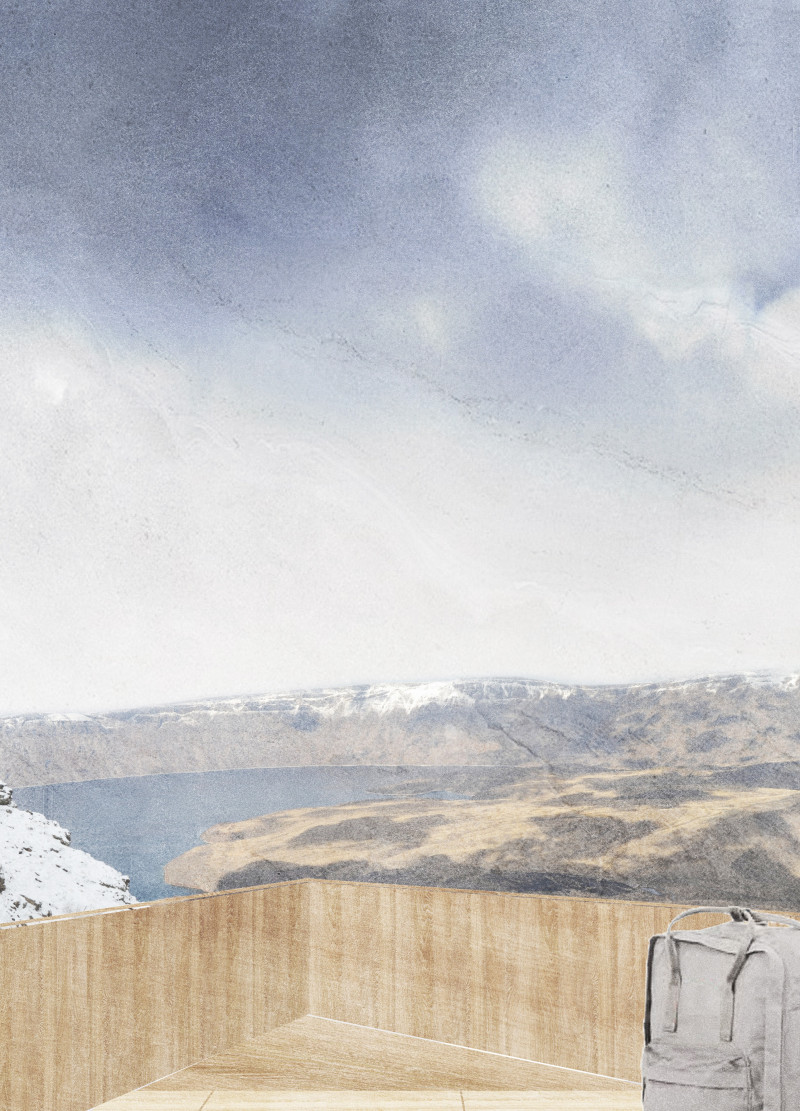5 key facts about this project
Situated in the volcanic landscape of Nemrut Observation Path, the design explores the relationship between constructed spaces and the natural world. The concept revolves around three main architectural forms: the hut, the enclosure, and the pavilion. Each structure responds differently to the unique environment, creating distinct experiences for visitors while forming a connection with the rugged terrain.
Hut
The hut acts as a place of retreat from the surrounding landscape. Its straightforward design provides shelter and encourages solitude. Here, visitors can find a quiet moment to reflect and engage with their environment. The form integrates smoothly with the surroundings, offering a protected space that highlights the beauty of its context.
Enclosure
The enclosure is designed to absorb its landscape, allowing a more personal experience. It creates an intimate atmosphere where visitors can engage in quiet reflection. The geometry takes the form of a pinwheel arrangement of platforms, which directs users to a central opening topped with a wide oculus. This feature invites sunlight into the space, creating a connection to the sky while framing vistas of the outdoors.
Pavilion
The pavilion raises visitors above the land, offering a broader view of the landscape. This elevation encourages an exploratory experience. Inside, a rotated bench allows users to sit comfortably and take in the views, promoting interaction with the surrounding environment.
Steel screw foundations provide structural support for each form, ensuring stability while minimizing disruption to the natural ground. The project incorporates burned timber cladding, connecting the structures to the geological history of the area. This material choice reflects the powerful landscape while maintaining an understated presence. The design emphasizes a thoughtful relationship between the built environment and the natural forces that shaped it.


























